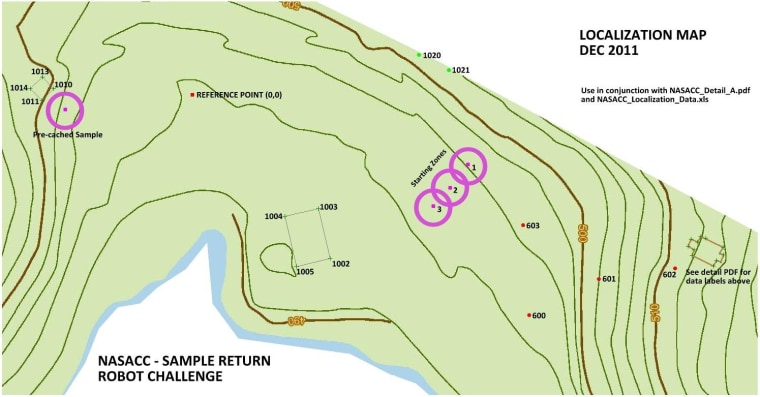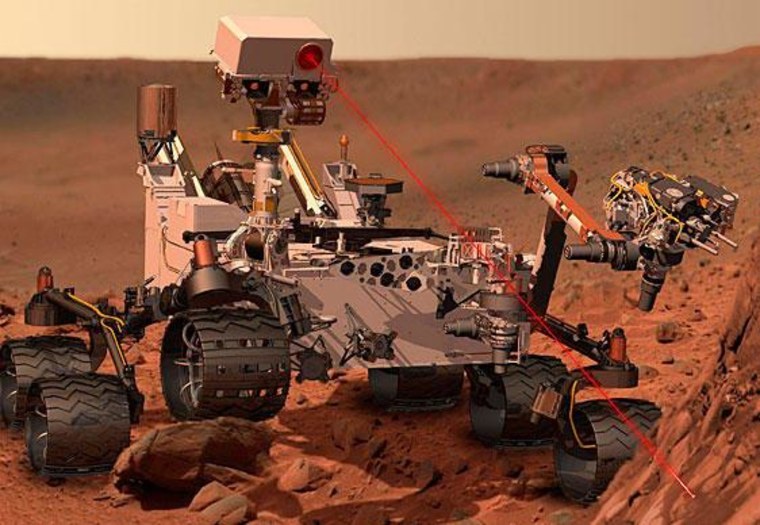Mark June 16 on your calendar, interplanetary robot fans: That’s when autonomous rovers will face off in NASA's $1.5 million Sample Return Robot Challenge at Worcester Polytechnic Institute in Massachusetts.
The challenge, one of several that NASA is sponsoring, was announced back in July 2010 — but a purpose-built autonomous robot isn't a simple thing to create, so it has taken nearly two years to collect and vet the entrants.
The challenge, in brief, is to create a compact (1.5 cubic meters, 175 pounds) robot that can navigate varied terrain, find and collect certain items, and return them safely to the base. But it must do this without the use of GPS or any "Earth-based" systems, such as a compass or Internet connection, which naturally would not be available on celestial bodies other than our own. Furthermore, the robot can't use air cooling, ultrasonic rangefinders or a number of other techniques that wouldn't be workable in an airless environment.
There are both private and public teams: Groups from the University of Pennsylvania and the University of Waterloo have both made the final 11, and the rest are start-up companies such as SpacePRIDE from South Carolina and True Vision Robotics from Atascadero, Calif. Six of the teams are based in California, while the rest are scattered around the US and Canada.
The teams' robots will be unmanned and on their own once deployed, but they won't be going in completely blind. As would likely be the case on a real planetary mission, NASA is providing satellite imagery of the area, compete with topographic information and points of interest:

The first phase of the challenge is a qualifying round, in which robots must retrieve a single sample within a quarter of an hour. Teams that succeed will be admitted to the second phase, the real challenge. There will be 10 samples in the vicinity, and a robot will have just two hours to collect as many as it can and return to a designated point. The prize money will be divvied up based on how the rovers perform this second task.
A powerful and reliable sample-return robot will be a critical part of future robotic planetary missions. NASA has also set up competitions for other important parts of such endeavors, such as wireless power systems and digging mechanisms. Such research is readily adaptable to terrestrial applications such as disaster response and automated industry.
WPI will be hosting the event on their campus in Massachusetts on June 14-18, with the competition beginning in earnest on June 16. NASA's deputy administrator, Lori Garver, and chief technologist Mason Peck will be on hand for the awards ceremony.
Devin Coldewey is a contributing writer for msnbc.com. His personal website is coldewey.cc.
